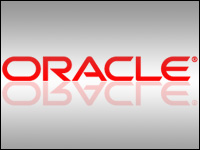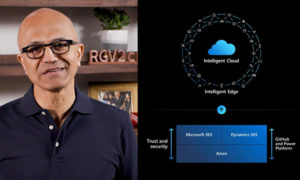
Oracle will issue the first release of its next-generation Fusion applications in the first quarter of 2011, company CEO Larry Ellison has announced.
It took the database giant five years to integrate the “best features” of PeopleSoft, Siebel and its own E-business suite. Oracle purchased PeopleSoft in 2004 and Siebel in 2005.
Oracle will make 100 different products available simultaneously when Fusion apps are released next year, Ellison said.
The Fuss About Fusion
Fusion is middleware, a set of services that ties together multiple applications on one computer or on several computers that may run different operating systems. It includes Web servers, application servers and other tools.
Oracle Fusion middleware includes Oracle Web Logic Server; Oracle Application Server; the JRockit Java virtual machine; the Tuxedo application; business rules; a business process analysis suite; enterprise connectivity; the Oracle Enterprise Service Bus; Oracle Web Services Manager; the Oracle Application Development Framework; Oracle Forms Services; and Oracle Discoverer.
To prepare customers for using Fusion apps, Oracle will run several classes on Fusion applications at Oracle OpenWorld 2010, which runs in San Francisco through Thursday.
Oracle Fusion applications will be offered in seven product families, including financial management, project and portfolio management, and supply chain management. They are built on a service oriented architecture (SOA) foundation.
SOA is a software architecture built around business processes offered as services that can be reused throughout an enterprise.
More Heat on Fusion
Oracle plans to integrate the best products and capabilities from Sun Microsystems into Oracle Fusion middleware.
Fusion middleware is the basis of Oracle’s plans to engineer and deliver integrated, stack-spanning applications to storage so that customers don’t have to do their own integration. This will save customers considerable time and money, as software integration is one of the most costly and time-consuming tasks in IT.
Fusion middleware’s capabilities include business process management, business intelligence, collaboration, content management, identity management, SOA and data integration.
“Bundling middleware with applications is what Oracle’s doing with Fusion Apps,” Al Hilwa, a program director at IDC, told CRM Buyer. “I think it’s innovative.”
Hilwa predicted that Oracle will unveil a hardware/software combo for Fusion Apps the way it has for its database.
“If you look at their pattern, they had ExaData, now they’ve got ExaLogic,” he pointed out. “Next year, they may announce ExaFusion.”
The Road to Fusion
Fusion has been quite a long time in the making.
In July of 2009, it launched version 11g of the Fusion middleware suite. This focused on efficiency and productivity, and products unveiled centered around the application grid infrastructure, SOA, security and portal management.
In 2008, Oracle took a major step toward Fusion applications when it launched Oracle 11g, the first release of its Web and SOA platforms. This heavily leveraged middleware from BEA Systems, which Oracle purchased in 2008.
BEA’s WebLogic Server was modified and renamed the Oracle WebLogic Server. This was Oracle’s first product incorporating BEA’s middleware, and was announced in August of 2008.
Users will be able to deploy Oracle Fusion apps on private and public clouds as well as on-premise.





















































